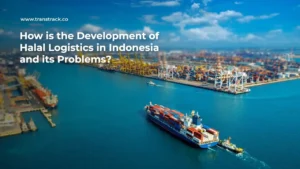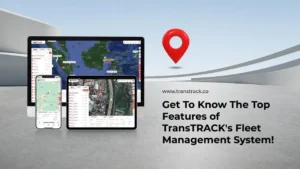What is ETD in the World of Logistics: Definition, Function and Difference with ETA
Posted on November 14, 2023 by Nur Wachda Mihmidati

In the rapidly growing world of logistics, we often hear technical terms that may sound unfamiliar. One of them is ETD. ETD is an important element in the distribution of products to customers. Another term that is closely related to ETD is ETA. You may ask, “what’s the difference between the two?”.
No need to be confused, to answer that question, just look at this article TransTRACK until it is finished. In this article, you will be invited to get to know more about ETD starting from understanding, its function in the world of logistics, to the difference with ETA.
What is ETD?
ETD stands for “Estimated Time of Departure”. If translated into Indonesian, Estimated Time of Departure can mean “Estimated Time of Departure”. In the logistics or freight forwarding industry, ETD refers to the estimated time at which a vehicle or cargo will leave its original location for its final destination. ETD information is very important in logistics management, especially in long-distance freight forwarding and supply chain management.
Estimated Time of Departure means that in the logistics business, we have an estimate of when the goods will depart from the warehouse or location of origin. This information helps all parties involved, from logistics providers to customers, in planning and coordinating the delivery process. In other words, ETD plays an important role in ensuring the smooth running of logistics operations.
ETD Function in Logistics Business
The ETD (Estimated Time of Departure) function in the logistics business is vital and plays a role in various operational aspects. These are some of its functions in the logistics business:
Planning and Coordination
Estimated Time of Departure is a key tool in planning and coordinating the entire supply chain. It allows logistics companies to organize delivery schedules, identify the right time to load goods, and plan efficient routes. With accurate ETD information, companies can plan better and avoid unwanted delays.
Inventory Management
Estimated Time of Departure affects inventory management. By knowing when goods will leave the warehouse or their origin location, companies can better manage stock. This helps in avoiding shortages or overstocks, which can impact costs and customer satisfaction.
Cost Optimization
Accurate ETD information allows companies to optimize logistics costs. Companies can plan the use of resources, such as vehicles and labor more efficiently. In addition, companies can avoid additional costs that may arise due to delays or changes in the schedule.
Timely Delivery
One of the key functions of ETD is to ensure on-time delivery. This is important in maintaining business reputation and meeting customer expectations. With accurate ETD information, companies can avoid delays that can harm customers and negatively impact business reputation.
Difference between ETA and ETD
As mentioned earlier, ETD is closely related to ETA (Estimated Time of Arrival). However, you don’t need to be confused in thinking about the difference between the two, because we will explain it for you.
The main difference between ETA and ETD is that ETA deals with arrival, while Estimated Time of Departure deals with departure. ETD is the beginning of the shipping process, while ETA is the final stage that informs when the goods arrive at the destination. These two pieces of information work together in logistics management to provide a complete picture of the entire cargo journey.
ETA provides information to the consignee or customer regarding when they will receive the delivered goods. While Estimated Time of DepartureD provides information to logistics companies and related parties involved in the delivery process to plan and manage logistics before delivery is made.
Factors Affecting ETD in Logistics
Many factors can affect the Estimated Time of Departure in logistics. Understanding these factors is key to planning and managing logistics operations more efficiently. Here are the factors that can affect ETD:
Slow Preparation
Slow cargo preparation processes such as packing, labeling, and weight measurement can affect the Estimated Time of Departure. The faster the preparation is completed, the faster the vehicle can depart.
Traffic Congestion
Traffic congestion, especially in urban areas, can cause delays in travel. Route planning must consider the current traffic conditions so that the Estimated Time of Departure can run as planned.
Technical Problems
Technical issues such as engine breakdowns or flat tires can cause delays in departure. Regular vehicle maintenance and periodic inspections should be conducted to help mitigate this risk.
Permits and Regulations
The lengthy process of licensing and regulatory compliance can affect the Estimated Time of Departure. Ensure all vehicle and driver licenses are in proper condition.
Poor Communication
Poor communication between parties involved in logistics operations, including customers, drivers, and warehouse staff, can cause confusion and delays that will affect ETD.
In the increasingly complex and rapidly changing world of logistics, Estimated Time of Departure is one of the key concepts that should not be overlooked. With a good understanding of ETD, logistics companies can plan, manage, and provide better services to their customers.
To improve Estimated Time of Departure in logistics, companies need careful planning, good resource management, use of technology, and efficient communication. However, with the Transportation Management System (TMS) technology from TransTRACK, logistics companies will find it much easier to optimize ETD.
TMS is a technology specifically designed to assist companies in planning, managing, and monitoring the entire shipping process. This technology helps in better planning, inventory management, efficient use of resources, and accurate communication. With TMS, logistics companies can improve the efficiency of their operations, reduce delays, and ensure timely delivery to customers. Come immediately contact TransTRACK and enjoy the convenience of optimizing the maximum quality of logistics services with Transportation Management System technology.
Recent Post
Topic :
 Bahasa Indonesia
Bahasa Indonesia









